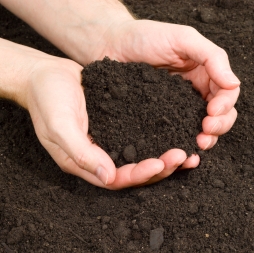631-993-1039 / 516-659-4716
When
purchasing topsoil, there are often some common misconceptions. Many think that
the topsoil purchased should be dark, fertile, friable loam capable of serving
all landscaping needs. However, there are NO legal standards for topsoil! Topsoil, as the name infers, is the uppermost
layer of soil. The surface soil usually is darker in color than the subsoil
below it because of the accumulation of organic matter.
 On the other hand, loam, is a
textural classification. Texture refers to the relative amount of sand, silt
and clay in a soil. A loam is technically a soil with between 7% and 27% clay,
28% to 50% silt and less than 52% sand.
On the other hand, loam, is a
textural classification. Texture refers to the relative amount of sand, silt
and clay in a soil. A loam is technically a soil with between 7% and 27% clay,
28% to 50% silt and less than 52% sand.
When
buying topsoil, it’s a good idea to visually inspect the soil. Make
sure it is free of trash and other debris. Screened topsoil should be free of
rock fragments and greater than 3 inches in diameter.
Soil
texture greatly affects the suitability of topsoil. Sands should be avoided
because they almost always have a low water and nutrient holding capacity.
Clays, sandy clays, silty clays and silts should be avoided because they tend
to be difficult to cultivate and insufficiently permeable to water and
air. Soil textures that may be suitable for
topsoil include loamy sands, sandy loams, loams,
silt loams, silty clay loams, clay loams and sandy clay loams. Because they tend to resist compaction, loamy sands
may be preferred in areas subject to traffic or other conditions that may
result in soil compaction.
Have
you ever been dissatisfied with your topsoil? Let us know on our Facebook page
linked HERE!

No comments:
Post a Comment